With over 1.4 billion inhabitants, Africa is currently the second most populous continent in the world, a result of decades of rapid demographic growth. However, this dynamic varies significantly across regions. While Sub-Saharan Africa has an average fertility rate of 4.5 children per woman, North Africa is undergoing a notable demographic transition, with a rate of around 2.8 children per woman. These disparities reflect diverse economic and social realities, requiring each region to adapt its policies to address the challenges of this growth.
According to recent United Nations projections, by 2050, Africa will host more than a quarter of the world’s population. Sub-Saharan Africa, in particular, will be at the heart of this expansion, accounting for nearly half of global population growth. With a median age of just 19.2 years, the continent’s workforce is growing rapidly, gradually reducing the dependency ratio. While this situation opens unprecedented development opportunities, it also carries significant risks, such as rising unemployment and social tensions, if massive investments in training and job creation are not made.
The demographic dividend—defined as the economic growth acceleration linked to the increasing ratio of the working population to the dependent population—represents a unique opportunity for Africa. However, to turn this potential into reality, one critical lever is essential: education.
Education: A Pillar of Transformation
Education is not just about training individuals; it also forms the foundation of productive and stable societies. Studies indicate that an additional year of schooling can increase incomes by 10% and reduce poverty risks. Education also plays a crucial role in enhancing individuals’ capacity to adapt to rapid labor market changes, particularly those driven by technological advancements.
Access to education for young girls is particularly critical. It promotes their participation in economic, social, and political life while contributing to women’s empowerment and reducing inequalities. This access also positively influences demographic dynamics by enabling women to make informed decisions about their family and professional futures.
Despite these advantages, education systems across Africa still face significant structural challenges, limiting their ability to meet the growing needs of a young and rapidly expanding population. These challenges are evident on two levels: the supply of education and the demand for schooling.
On the supply side, systems suffer from insufficient infrastructure, overcrowded classrooms, curricula often poorly aligned with local economic realities, and a severe shortage of qualified teachers. Conflicts, social crises, and political instability also disrupt school schedules and limit access to education in certain regions.
On the demand side, several social and economic factors hinder access to education. Poverty plays a decisive role: for many families living in precarious conditions, schooling for their children can represent a direct cost (tuition fees, uniforms, supplies) or an indirect one (loss of income from child labor). These financial constraints sometimes lead parents to prioritize immediate gains, such as sending children to work, over the long-term benefits of education—a broader issue known as Time Inconsistency. Furthermore, social and cultural barriers exacerbate this situation. Some parents, particularly in certain communities, are still reluctant to enroll their children—especially girls—due to persistent gender norms. High dropout rates, especially in rural areas, also reflect these challenges. These often invisible obstacles significantly impede progress toward universal and inclusive education.
However, potential solutions are emerging to strengthen education systems in Africa and make education more accessible and relevant, particularly in the context of rapid demographic growth. Among these, four major approaches deserve particular attention.
Approach 1: Transforming Education Through Strategic Investment
Faced with the structural and social challenges of education, African states must implement ambitious policies and mobilize sufficient resources to guarantee equitable access to quality education. According to UNESCO, each country should allocate between 4% and 6% of its GDP to education. However, since 2012, educational expenditures in Africa have stagnated at an average of 3.7% of GDP, with significant regional disparities: Southern Africa leads with a median investment of 6.6% of GDP, while Central Africa lags behind at just 2.9%. Eastern, Northern, and Western Africa allocate 3.3%, 3.9%, and 3.5%, respectively.
Regions with the lowest educational investments often experience high demographic growth, which risks perpetuating a vicious cycle. Chronic underfunding limits the ability of education systems to meet the growing needs of a young population, while demographic pressures exacerbate these budgetary shortfalls.
Although this topic is primarily related to governance, newer solutions, such as innovative financing mechanisms for education, must be considered.
These mechanisms have the potential not only to increase available resources but also to ensure their more efficient and equitable allocation. In the long term, such approaches could transform the prospects for human, economic, and social development by fostering a skilled workforce and reducing inequalities.
A concrete example of such a mechanism is the Debt2Ed program
The Debt2Ed Program
The Debt2Ed program, implemented in Côte d’Ivoire, showcases an innovative approach to converting debt into development funding. Supported by the World Bank Group and facilitated through collaboration with the French government, this initiative enables Côte d’Ivoire to redirect funds originally allocated for debt repayment into education projects. Specifically, the program replaces expensive existing debt with a loan under more favorable terms.
As a result, estimated savings of over €70 million will be reinvested in constructing more than 30 schools and various educational programs, providing new opportunities for an additional 30,000 students. By reducing budgetary pressure while improving access to education, the program addresses critical issues such as low preschool enrollment rates and pronounced inequalities between urban and rural areas.
The Debt2Ed program highlights the transformative potential of innovative financing to bridge educational gaps and promote sustainable development across Africa.
Approach 2: Integrating Culture and Language to Enhance Learning
Adapting educational content to cultural and local realities is essential to ensure the effective ownership of knowledge. Intercultural and contextual education strengthens student engagement and improves academic success by incorporating elements of their daily environment into the teaching process.
An inspiring example is Senegal, where the introduction of Wolof into school curricula significantly improved student performance. By learning in a language they are familiar with from an early age, students become more engaged and have a better understanding of the subjects taught. This approach promotes a more inclusive and relevant education, valuing local cultural identities while developing universal skills.
Thus, intercultural and contextual education serves as a response to the disconnect often observed between educational content and students’ realities. It provides a path to more effective schooling, capable of reducing dropout rates and increasing the impact of learning on local development.
Approach 3: Leveraging Technology for Inclusive Education
Educational technologies present a unique opportunity to address the structural deficiencies of education systems, which face challenges such as a lack of qualified personnel, insufficient infrastructure, and geographical disparities. Digital tools, innovative platforms, and distance learning provide practical solutions to democratize access to education and enhance its quality. An inspiring example is Ubongo, a social enterprise based in Tanzania. Through educational programs like Ubongo Kids and Akili and Me, broadcast on television and radio, Ubongo reaches millions of children, including those in underserved communities. These programs teach mathematics, science, and life skills in multiple local languages. By combining engaging and accessible educational content,
Ubongo breaks linguistic barriers and makes education available even in remote areas where schools are scarce or nonexistent.
Furthermore, digital technologies also support the continuous professional development of teachers by providing modern and adaptable teaching resources without requiring costly travel. This approach enhances teaching quality by introducing new pedagogical methods (such as game-based learning and personalized monitoring) and facilitating the exchange of best practices among educators.
However, for these initiatives to fully realize their potential, it is essential to account for local constraints, such as electricity availability, internet coverage, and the technical training required to use these tools effectively.
Approach 4: Vocational Training as the Cornerstone of a Dynamic Labor Market
In an African market where the informal sector accounts for nearly 90% of economic activity and the majority of the workforce is young, Technical and Vocational Education and Training (TVET) has emerged as a critical driver of socio-economic development. By equipping young people—including women and rural communities—with practical, job-ready skills, TVET programs address the evolving demands of the labor market. Unlike formal education paths, which are often lengthy and inaccessible to disadvantaged groups, these programs offer a second chance to those who have left the school system or missed out on traditional education. They promote greater inclusion by integrating approaches tailored to local realities, reducing inequalities in access, and multiplying learning opportunities.
Through its Vision 2030 strategy, Morocco has aligned TVET programs with the needs of its automotive industry, boosting production, exports, and employment. By working closely with the private sector, the country has developed a skilled workforce that has helped make the automotive sector Africa’s leading exporter and manufacturer. Between 2014 and 2019, over 147,712 jobs were created in this sector, contributing to a turnover of €7 billion in 2021.
The full potential of TVET in Africa, however, cannot be realized without enhanced collaboration. Governments, the private sector, development agencies, and civil society must join forces to fund, modernize, and scale these programs. As Angora Aman highlights in TVET as a Cornerstone for Industrial Development in Africa, TVET programs can play a pivotal role in driving the continent’s industrial renaissance.
____________________
By 2050, Africa’s population will exceed a quarter of the global total, offering a vast pool of talent and energy. Education is the key to transforming this expanding population into a sustainable driver of development. While challenges—from weak infrastructure to cultural barriers—are real, the continent’s youthful dynamism can be harnessed through targeted investments, culturally responsive teaching, technology-based solutions, and market-aligned vocational training.
Governments, businesses, nonprofits, and global partners share the responsibility of ensuring every African child and young adult has access to quality education. By seizing this demographic opportunity now, Africa can lay the foundation for a prosperous tomorrow.
Will these solutions take shape by 2050, or will untapped potential turn into social and economic strain? The choice depends on the actions taken today.
Sources and References
- Preparing the Next Generation: Education and Jobs Key to Unlocking Africa’s Demographic Potential. Benissan Barrigah, African PACT, May 2024.
Available at: https://africanpact.org/2024/05/06/preparing-the-next-generation-education-and-jobs-key-to-unlocking-africas-demographic-potential/ - TVET as a Cornerstone for Industrial Development in Africa. Angora Aman, September 2023.
Available at: https://africanpact.org/2023/09/11/tvet-as-a-cornerstone-for-industrial-development-in-africa/ - Mingat, A., & Majgaard, K. (n.d.). Education in Sub-Saharan Africa: A Comparative Analysis
- Diouf, P. B. (2019). Innovations pédagogiques pour l’intégration des langues nationales africaines dans l’éducation : quel état des lieux au Sénégal ?
- International Programs: Southern Africa. Population Reference Bureau (PRB)
- UNESCO Institute for Statistics. Global Education Data Release 2024 and Brand-New Knowledge Products.
- Fertility Rate in Sub-Saharan Africa. Statista.
- Debt2Ed Initiative. Global Partnership for Education.
- World Bank. Africa’s Demographic Transition: Dividend or Disaster?
- Bloom, David E., et al. Population Dynamics and Economic Growth in Africa. The Quarterly Journal of Economics, vol. 104, no. 3, 1989, pp. 443–478.
- Le Monde. (2024, octobre 4). Au Sénégal, les nouvelles autorités font le choix de l’enseignement dans les langues nationales
- A Guide to Financing Education in Africa. World Bank Document.
- Canning, David, and Raja, Siddharth. Africa’s Demographic Transition: Dividend or Disaster. ResearchGate, 2016.
- Ubongo’s Impact on Educational Innovations in Africa.
- UNESCO GEM Report (2023). Overview of education financing worldwide post-COVID-19.
- World Bank Africa Education Financing Watch (2023). Africa-specific edition of the Education Financing Watch.
- Reshaping Debt Management: Insights on reshaping debt management to invest in human capital. World Bank Group.
- Making Education Financing Go Further: Disrupting the status quo in education financing. UNESCO.
- World Bank Data on Education Expenditure: Indicator on total education expenditure as a percentage of GDP
_____________________ Benissan Barrigah is a development professional with several years of experience in program management and public policy design. His dual background in engineering and management allows him to adopt a versatile and hands-on approach, capable of driving projects from start to finish. Passionate about African development issues, he is convinced that improving socio-economic conditions relies on tailored public policies and active involvement of all stakeholders. As the founder of PACT (Progressive African Communities and Territories), a think tank dedicated to designing tailored solutions for the development of African territories, Benissan uses his skills to drive impactful initiatives across the continent. In this capacity, the AfricanPact.org website regularly features articles and research on Africa and remains open to collaborations, thereby promoting knowledge sharing and networking around key themes for the continent's progress. Linkedin : https://fr.linkedin.com/in/benissan-yves-g-t-barrigah https://africanpact.org/


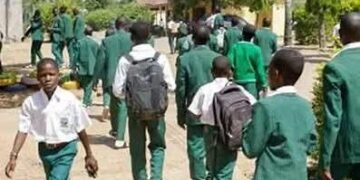
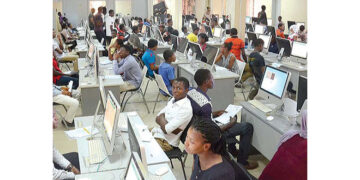


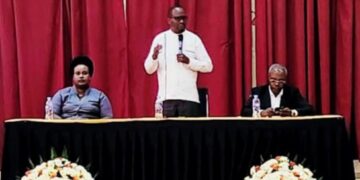
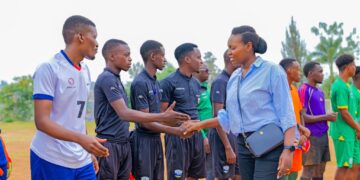



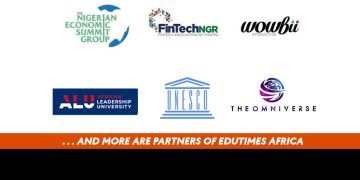
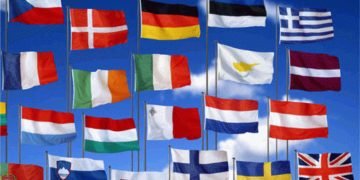
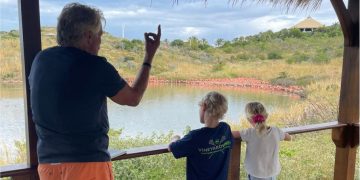






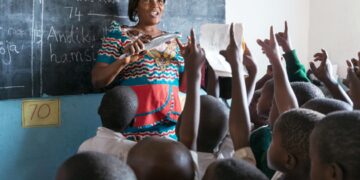

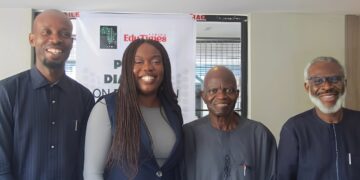


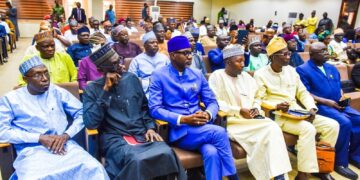






























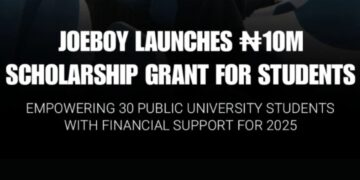
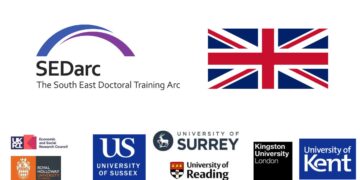





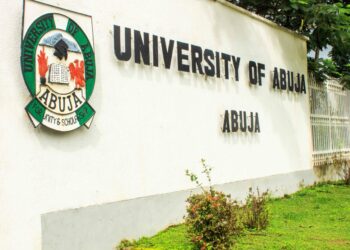












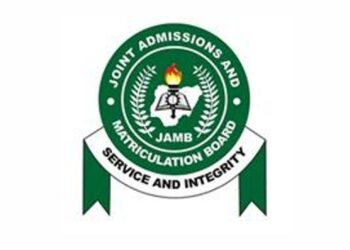
 EduTimes Africa, a product of Education Times Africa, is a magazine publication that aims to lend its support to close the yawning gap in Africa's educational development.
EduTimes Africa, a product of Education Times Africa, is a magazine publication that aims to lend its support to close the yawning gap in Africa's educational development.

